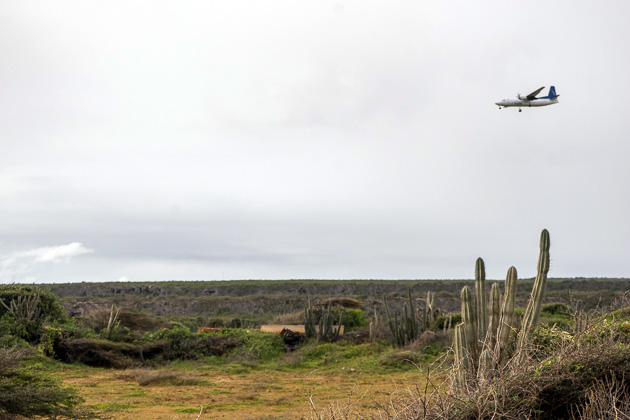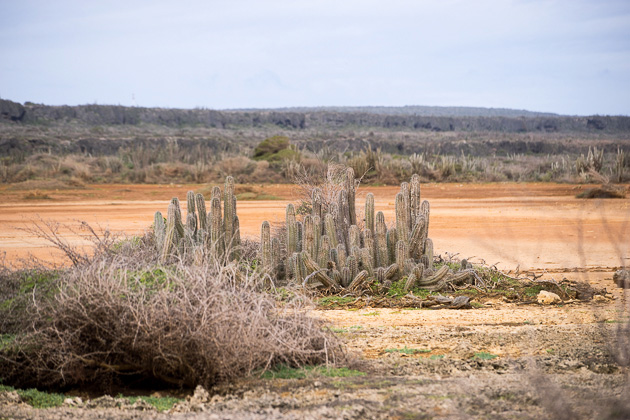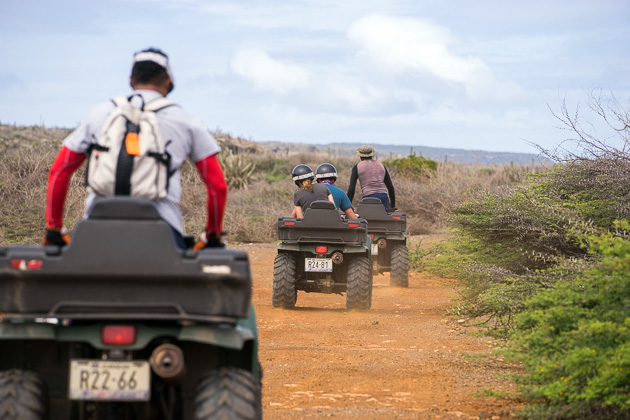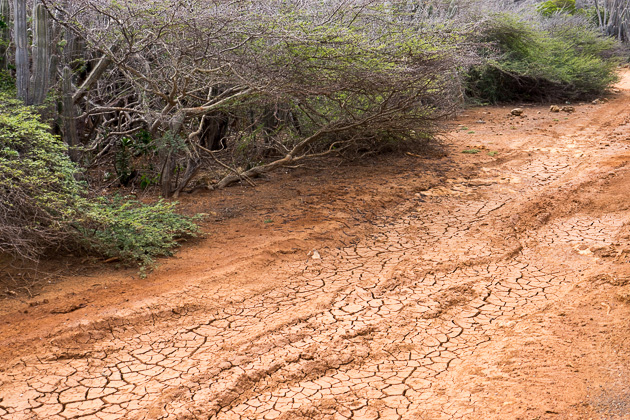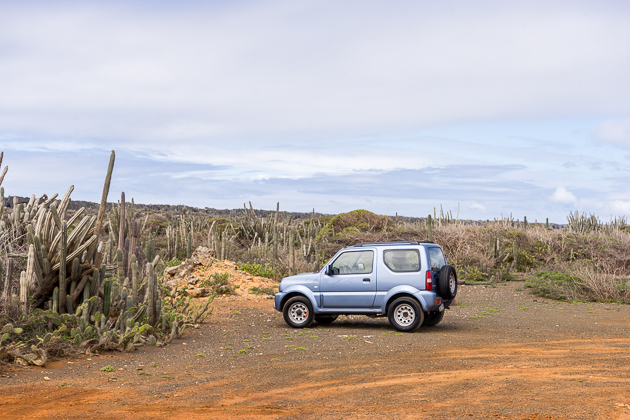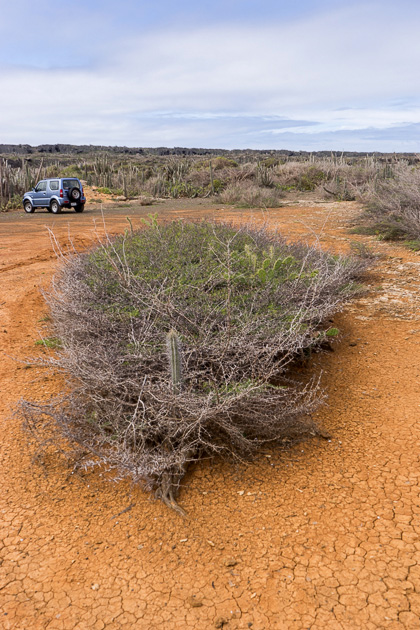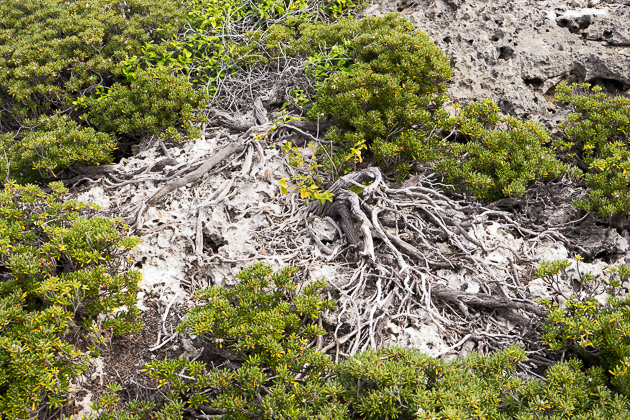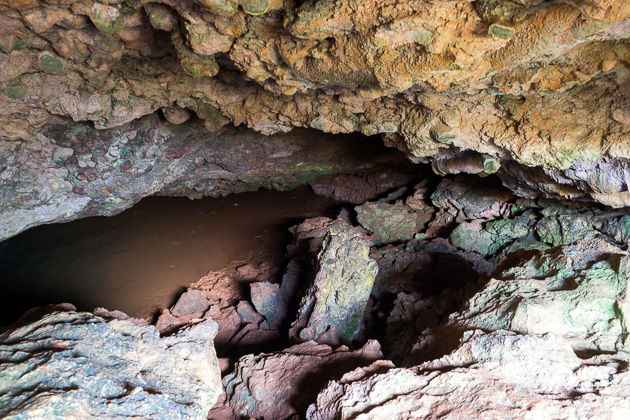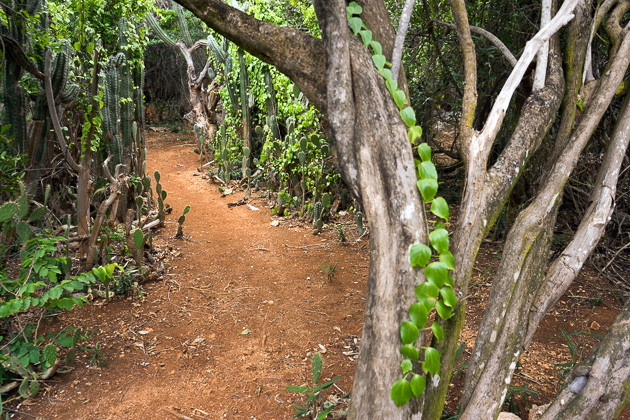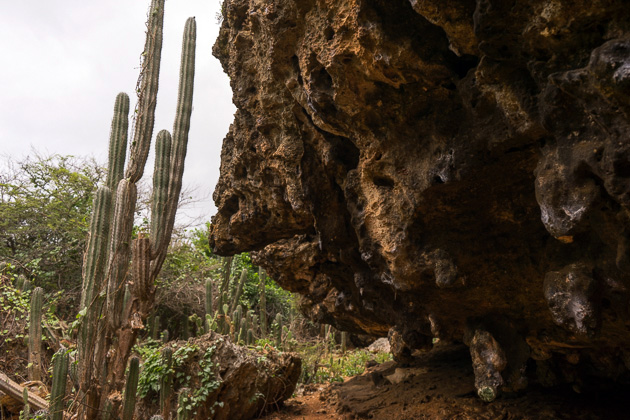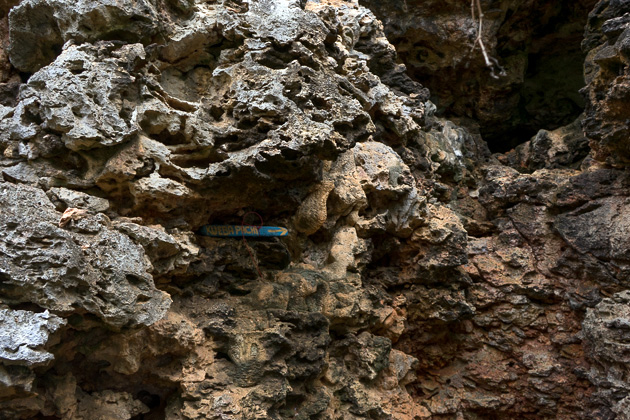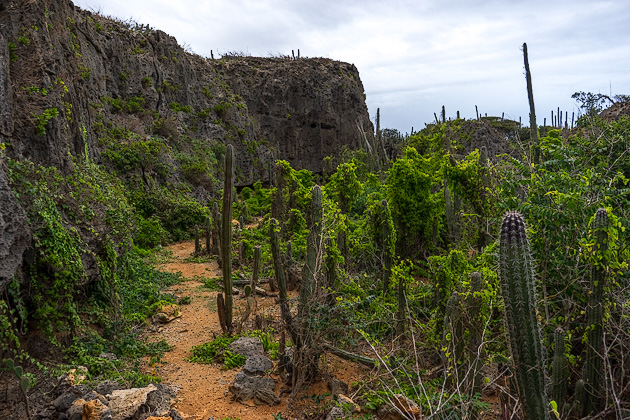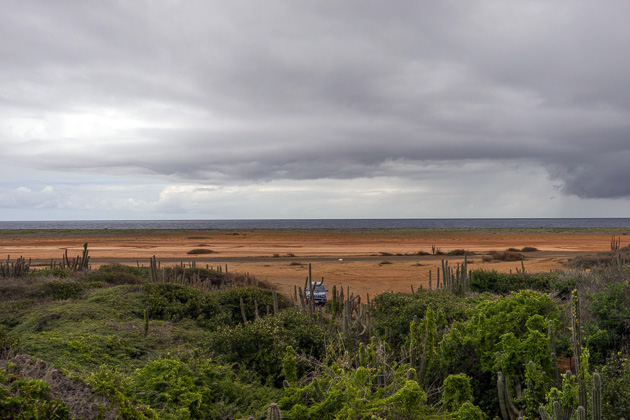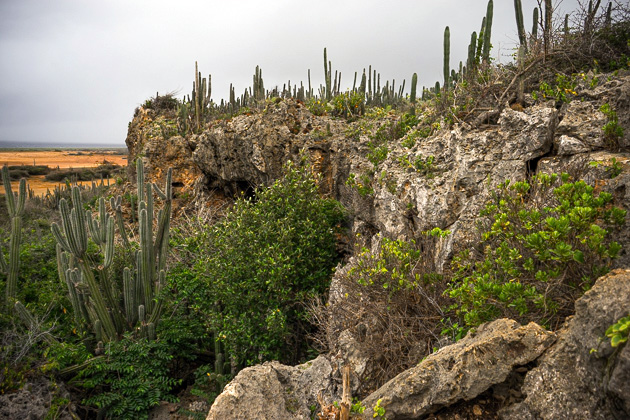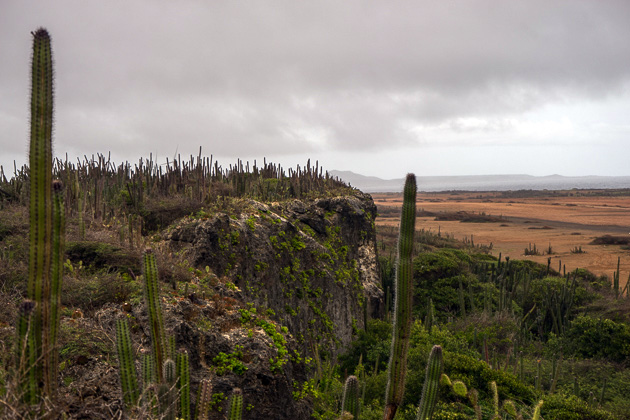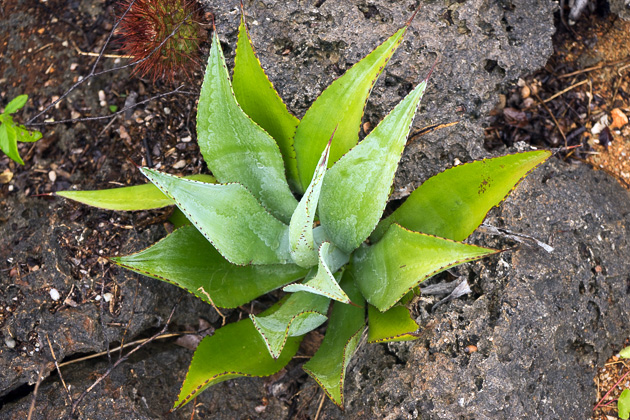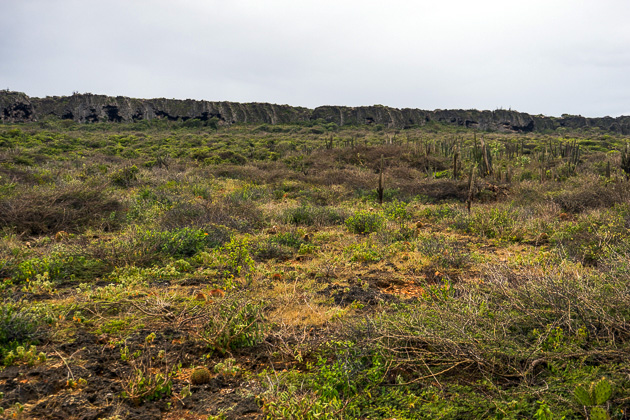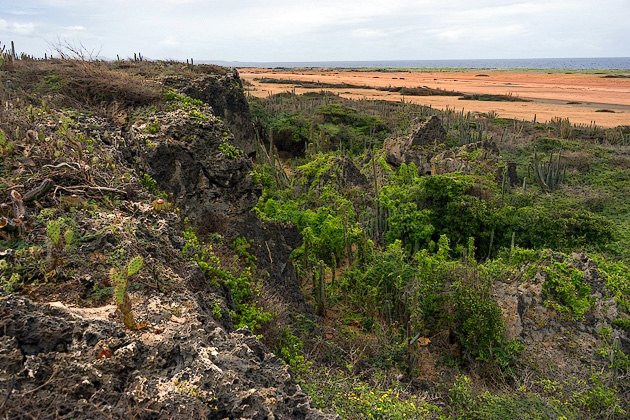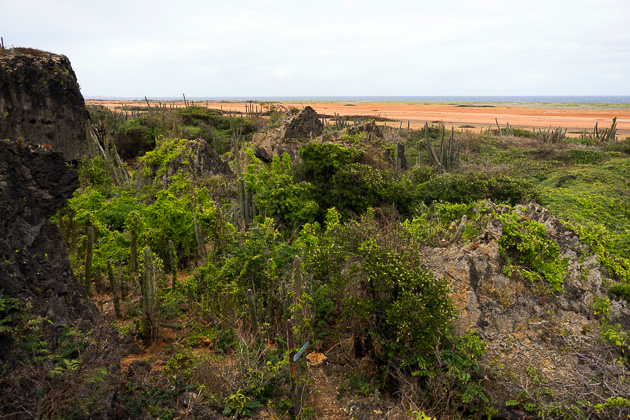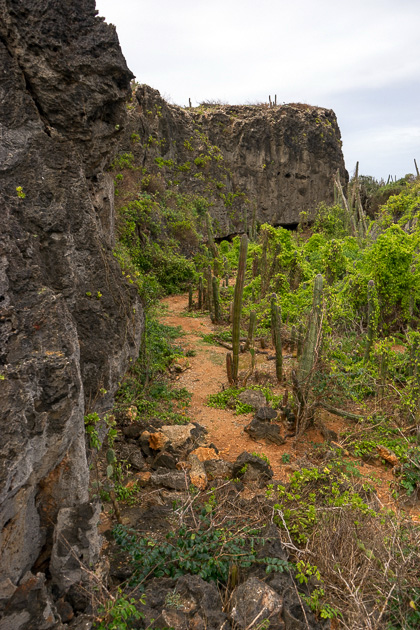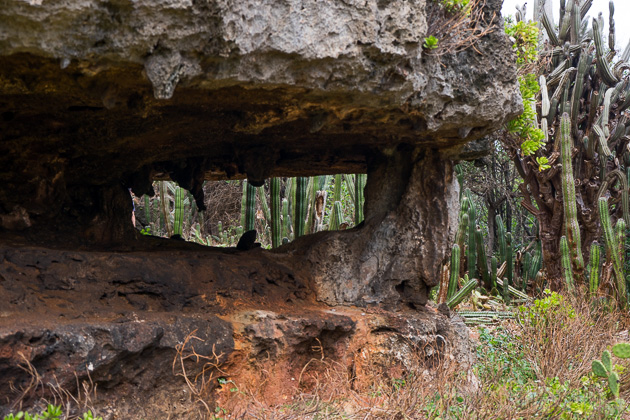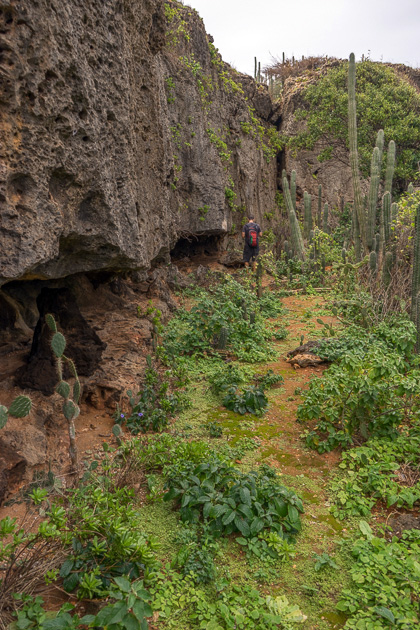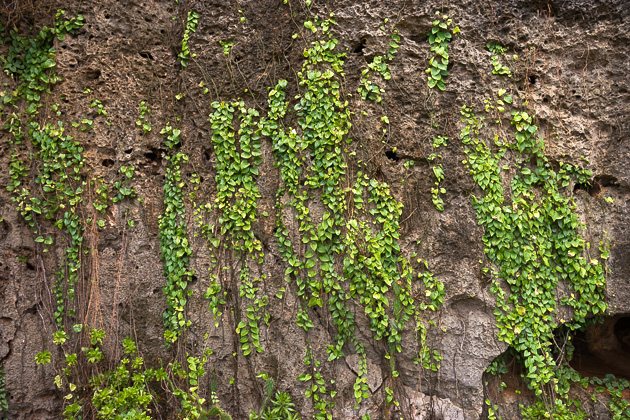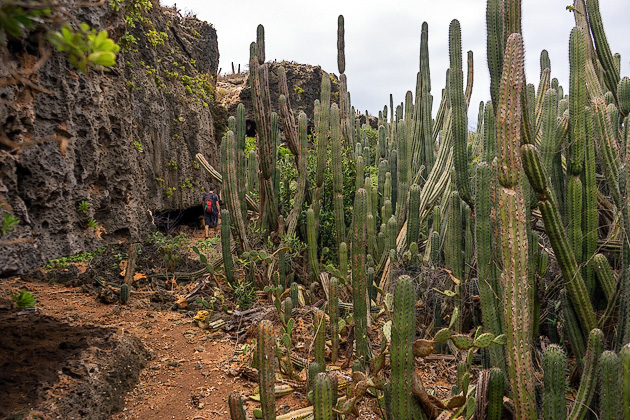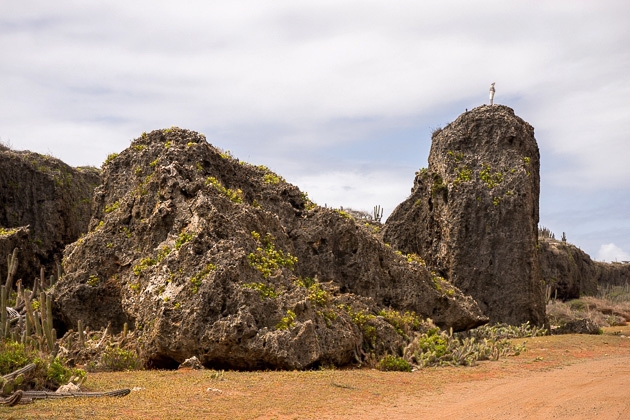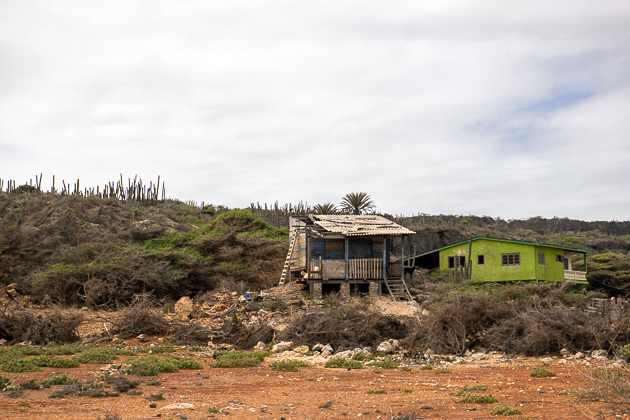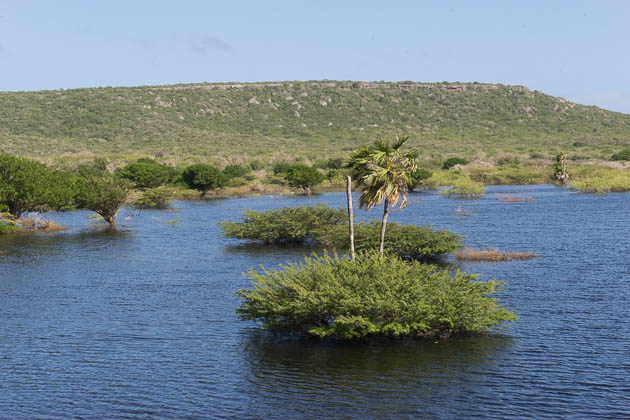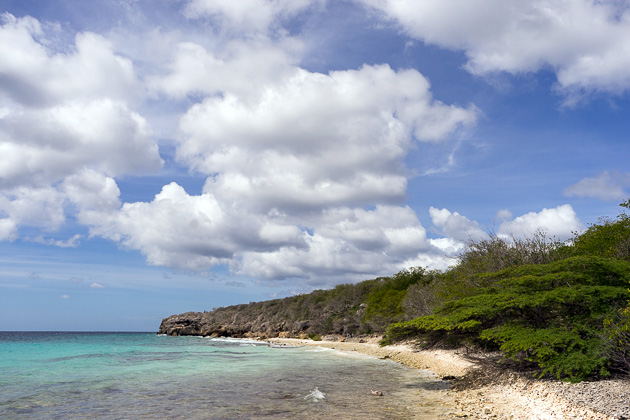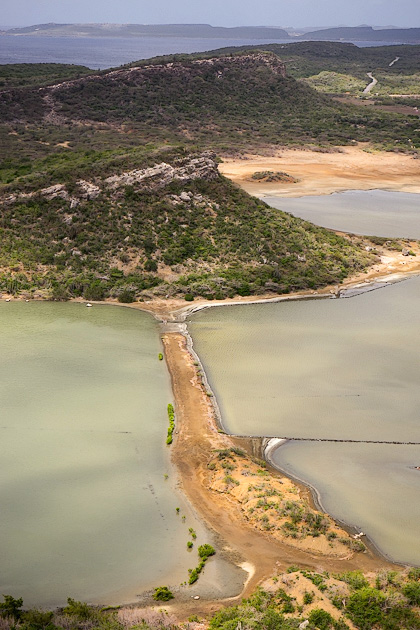The Cliffs and Caves of Hato Plains
The deserted section of coastline to the northwest of Curaçao’s international airport is known as the Hato Plains. There are no paved roads here, but if you have a jeep, this wide expanse of dry red earth trapped between the ocean and a set of inland cliffs is a fascinating area to explore.
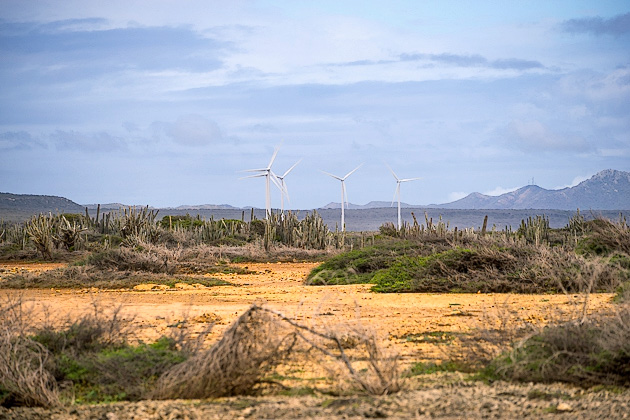
We rented a jeep for a single day, with the sole purpose of visiting Hato Plains. As luck would have it, the weather turned out to be miserable and rainy, but we were compelled to stick with the plan. Rental jeeps aren’t cheap, and it’s not like we could change the reservation at the last minute. Oh well, when hiking in temperatures as hot as Curaçao’s, rain can be a blessing.
A small access road leads from the airport onto the plains. This initial section is popular with plane-spotters, because airplanes take off and land right overhead. We saw a few people waiting with binoculars, possibly hoping to see the jumbo KLM jet which arrives daily from Amsterdam.
We parked our jeep at a few different spots along the way, the first being Cueba Shingot, a cave near the coast. The entrance is just a hole on the ground, barely visible on the flat earth of the plains, but the cavern is larger than it first appears, and you can walk quite far into the dark; care is required, though, because this close to the ocean, the rocks are slick.
Next, we returned further inland and parked our car near the cliffs, to look for a trail that was supposed to lead us to a series of caves. But this trail was almost impossible to find. Hato Plains is not developed as a tourism sight, meaning that there are very few signs for independent hikers. It took a lot of hunting along the cliffs before we finally saw a marker pointing to the Cueba di Pachi. One problem: the sign was pointed directly up.
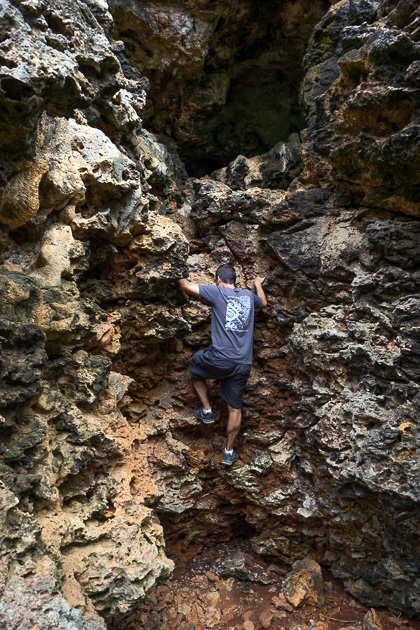
Mountain climbing is not our strong suit, but the terrace was only a few meters above the ground, and so we clambered up the rocks. The Cueba di Pachi was smaller and spookier than Shingot had been, and we explored it for only a couple seconds, chased off by the bats swooping past our heads. But we stayed on top of the cliffs, and followed a trail which led us an even smaller and spookier cave called Cueba Mirador, whose entrance was entirely overgrown.
Having returned along the path back down to the plains, we walked for a long time along the foot of the cliffs. This was the highlight of the day; every few minutes, we would discuss whether we should turn around, but the nature was so strange and beautiful, that we didn’t want to miss anything, and we pressed on much farther than we probably should have, considering the bad weather.

We drove through the remainder of the Hato Plains, slowly approaching a set of towering windmills on the horizon. Near the end of the park, we found something called the “Sabana di Arte,” where a local artist has incorporated the terrain into a series of weird art pieces: a section of jagged rock elaborated to resemble a dragon, for example, or wall paintings of local fauna.
We exited the park at the private farm of San Pedro, where there was a locked gate. Accessing the Hato Plains from the airport is free, but on the northern end, you have to pay the landowners a few guilders to get out. It’s worth it, to avoid the long drive back. Although we returned home wet and exhausted, it had been a fun day and we were in good spirits.
Locations on our Map: Cueba Shingot | Cueba di Pashi | Sabana di Arte
